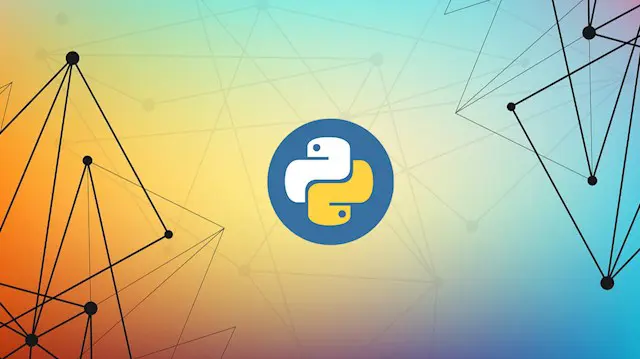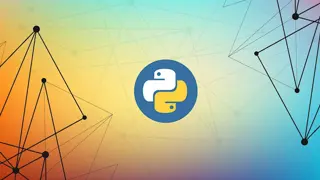
Data Science with Python
Self-paced videos, Lifetime access, Study material, Certification prep, Technical support, Course Completion Certificate
Uplatz
Summary
- Certificate of completion - Free
- Reed courses certificate of completion - Free
Add to basket or enquire
Overview
Uplatz offers this comprehensive course on Data Science with Python. It is a self-paced video course. You will be awarded Course Completion Certificate at the end of the course.
Data science is an interdisciplinary subject that use scientific techniques, procedures, algorithms, and systems to extract information and insights from structured and unstructured data, as well as to apply that knowledge and actionable insights to a variety of application areas. Data mining, machine learning, and big data are all linked to data science. Data science is an interdisciplinary approach to deriving meaningful insights from today's businesses' massive and ever-increasing amounts of data. Preparing data for analysis and processing, doing sophisticated data analysis, and presenting the results to expose trends and allow stakeholders to make educated decisions are all part of data science.
Data science is just about as broad of a term as they come. It may be easiest to describe what it is by listing its more concrete components i.e. Data exploration & analysis : Pandas; NumPy; SciPy; a helping hand from Python’s Standard Library and Data visualization - Taking data and turning it into something colorful : Matplotlib; Seaborn; Datashader.
This Data Science course will teach you the fundamentals of data science. This course is particularly beneficial to students who have no prior experience with data science. This course will teach you how to prepare data by cleaning, aggregating, and modifying it so that it is ready for particular sorts of processing.
In this Data Science with Python course by Uplatz you will learn to:
- Understand Python language basics and how they apply to data science.
- Practice iterative data science using Jupyter notebooks on IBM Cloud.
- Analyze data using Python libraries like pandas and numpy.
- Create stunning data visualizations with matplotlib, folium, and seaborn.
- Build machine learning models using scipy and scikitlearn.
- Demonstrate proficiency in solving real life data science problems.
Uplatz’s Data Science with Python course teaches you to master the concepts of Python programming. Through this Python for Data Science training, you will gain knowledge in data analysis, machine learning, data visualization, web scraping, & natural language processing. Upon course completion, you will get a certificate issued by Uplatz.
Course Outcomes
- Explain how these results can be used to solve business problems.
- Use mathematics, statistics, and the scientific method to solve problems
- Evaluate and prepare data using a variety of tools and techniques, including SQL, data mining, and data integration approaches.
- Use predictive analytics, such as machine learning and deep learning models, to extract insights from data.
- Create data-processing and calculation-automation apps.
Certificates
Certificate of completion
Digital certificate - Included
Course Completion Certificate by Uplatz
Reed courses certificate of completion
Digital certificate - Included
Will be downloadable when all lectures have been completed
Curriculum
Course media
Description
Data Science with Python – Course Syllabus
1. Introduction to Data Science
• Introduction to Data Science
• Python in Data Science
• Why is Data Science so Important?
• Application of Data Science
• What will you learn in this course?
2. Introduction to Python Programming
• What is Python Programming?
• History of Python Programming
• Features of Python Programming
• Application of Python Programming
• Setup of Python Programming
• Getting started with the first Python program
3. Variables and Data Types
• What is a variable?
• Declaration of variable
• Variable assignment
• Data types in Python
• Checking Data type
• Data types Conversion
• Python programs for Variables and Data types
4. Python Identifiers, Keywords, Reading Input, Output Formatting
• What is an Identifier?
• Keywords
• Reading Input
• Taking multiple inputs from user
• Output Formatting
• Python end parameter
5. Operators in Python
• Operators and types of operators
- Arithmetic Operators
- Relational Operators
- Assignment Operators
- Logical Operators
- Membership Operators
- Identity Operators
- Bitwise Operators
• Python programs for all types of operators
6. Decision Making
• Introduction to Decision making
• Types of decision making statements
• Introduction, syntax, flowchart and programs for
- if statement
- if…else statement
- nested if
• elif statement
7. Loops
• Introduction to Loops
• Types of loops
- for loop
- while loop
- nested loop
• Loop Control Statements
• Break, continue and pass statement
• Python programs for all types of loops
8. Lists
• Python Lists
• Accessing Values in Lists
• Updating Lists
• Deleting List Elements
• Basic List Operations
• Built-in List Functions and Methods for list
9. Tuples and Dictionary
• Python Tuple
• Accessing, Deleting Tuple Elements
• Basic Tuples Operations
• Built-in Tuple Functions & methods
• Difference between List and Tuple
• Python Dictionary
• Accessing, Updating, Deleting Dictionary Elements
• Built-in Functions and Methods for Dictionary
10. Functions and Modules
• What is a Function?
• Defining a Function and Calling a Function
• Ways to write a function
• Types of functions
• Anonymous Functions
• Recursive function
• What is a module?
• Creating a module
• import Statement
• Locating modules
11. Working with Files
• Opening and Closing Files
• The open Function
• The file Object Attributes
• The close() Method
• Reading and Writing Files
• More Operations on Files
12. Regular Expression
• What is a Regular Expression?
• Metacharacters
• match() function
• search() function
• re.match() vs re.search()
• findall() function
• split() function
• sub() function
13. Introduction to Python Data Science Libraries
• Data Science Libraries
• Libraries for Data Processing and Modeling
- Pandas
- Numpy
- SciPy
- Scikit-learn
• Libraries for Data Visualization
- Matplotlib
- Seaborn
- Plotly
14. Components of Python Ecosystem
• Components of Python Ecosystem
• Using Pre-packaged Python Distribution: Anaconda
• Jupyter Notebook
15. Analysing Data using Numpy and Pandas
• Analysing Data using Numpy & Pandas
• What is numpy? Why use numpy?
• Installation of numpy
• Examples of numpy
• What is ‘pandas’?
• Key features of pandas
• Python Pandas - Environment Setup
• Pandas – Data Structure with example
• Data Analysis using Pandas
16. Data Visualisation with Matplotlib
• Data Visualisation with Matplotlib
- What is Data Visualisation?
- Introduction to Matplotlib
- Installation of Matplotlib
• Types of data visualization charts/plots
- Line chart, Scatter plot
- Bar chart, Histogram
- Area Plot, Pie chart
- Boxplot, Contour plot
17. Three-Dimensional Plotting with Matplotlib
• Three-Dimensional Plotting with Matplotlib
- 3D Line Plot
- 3D Scatter Plot
- 3D Contour Plot
- 3D Surface Plot
18. Data Visualisation with Seaborn
• Introduction to seaborn
• Seaborn Functionalities
• Installing seaborn
• Different categories of plot in Seaborn
• Exploring Seaborn Plots
19. Introduction to Statistical Analysis
• What is Statistical Analysis?
• Introduction to Math and Statistics for Data Science
• Terminologies in Statistics – Statistics for Data Science
• Categories in Statistics
• Correlation
• Mean, Median, and Mode
• Quartile
20. Data Science Methodology (Part-1)
Module 1: From Problem to Approach
• Business Understanding
• Analytic Approach
Module 2: From Requirements to Collection
• Data Requirements
• Data Collection
Module 3: From Understanding to Preparation
• Data Understanding
• Data Preparation
21. Data Science Methodology (Part-2)
Module 4: From Modeling to Evaluation
• Modeling
• Evaluation
Module 5: From Deployment to Feedback
• Deployment
• Feedback
Summary
22. Introduction to Machine Learning and its Types
• What is a Machine Learning?
• Need for Machine Learning
• Application of Machine Learning
• Types of Machine Learning
- Supervised learning
- Unsupervised learning
- Reinforcement learning
23. Regression Analysis
• Regression Analysis
• Linear Regression
• Implementing Linear Regression
• Multiple Linear Regression
• Implementing Multiple Linear Regression
• Polynomial Regression
• Implementing Polynomial Regression
24. Classification
• What is Classification?
• Classification algorithms
• Logistic Regression
• Implementing Logistic Regression
• Decision Tree
• Implementing Decision Tree
• Support Vector Machine (SVM)
• Implementing SVM
Who is this course for?
Everyone
Requirements
Passion to achieve your goals!
Career path
- Data Scientist - AI/ML Python
- Principal Data Scientist
- Data Science Engineer
- Machine Learning Engineer
- Data Engineer
- Python Developer
- Data Science Manager
- Data Science Analyst — Smart Devices
- Product Data Scientist
- Data Analyst
- Data Visualization Developer
- Data Science Consultant
- Supply Chain Specialist - Data Science
- Lead Data Scientist
- Software Engineer - Data Science
- Chief Data Scientist
Questions and answers
How long do we have access to the content for this course?
Answer:Hi You get lifetime access to our course content. So, it's forever. Team Uplatz
This was helpful.
Reviews
Currently there are no reviews for this course. Be the first to leave a review.
Legal information
This course is advertised on reed.co.uk by the Course Provider, whose terms and conditions apply. Purchases are made directly from the Course Provider, and as such, content and materials are supplied by the Course Provider directly. Reed is acting as agent and not reseller in relation to this course. Reed's only responsibility is to facilitate your payment for the course. It is your responsibility to review and agree to the Course Provider's terms and conditions and satisfy yourself as to the suitability of the course you intend to purchase. Reed will not have any responsibility for the content of the course and/or associated materials.


